Are you a fan of tropical flavors and delicious desserts? If so, then you’re in for a treat with this mango cake recipe! Bursting with the sweet and tangy taste of fresh mangoes, this cake is a delightful indulgence that will satisfy your cravings. In this article, we will take you through a step-by-step guide on how to make a mouthwatering mango cake. Get ready to impress your family and friends with this delectable dessert!
[ez-toc]
History
The history of the mango cake recipe is a fascinating journey that combines the rich heritage of tropical fruits and the art of baking. Mangoes, with their juicy sweetness and vibrant colors, have been cherished in various cultures for centuries. As these delicious fruits spread across the world, people began experimenting with different ways to incorporate them into their culinary creations. One such creation is the mouthwatering mango cake.
Mangoes: A Tropical Treasure
The origins of mangoes can be traced back to South Asia, where they have been cultivated for over 4,000 years. Known as the “king of fruits,” mangoes are loved for their distinct flavor and smooth, creamy texture. These tropical fruits were highly valued in ancient civilizations, such as India, where they were considered a symbol of love and prosperity.
Fusion of Flavors
As trade routes expanded and cultural exchanges took place, mangoes found their way to various parts of the world. In regions like Southeast Asia, the Caribbean, and South America, mangoes became an integral part of the local cuisines. Chefs and home cooks experimented with blending the unique taste of mangoes with traditional recipes, leading to the birth of mango-infused desserts.
The Birth of Mango Cake
The exact origins of the mango cake recipe are difficult to pinpoint, as it has evolved over time and across different cultures. However, it is believed that the fusion of mangoes and cake can be attributed to the popularity of fruit-based desserts in the 19th century. As bakers sought to incorporate fresh fruits into their creations, mangoes stood out for their exotic and enticing flavors.
Evolution and Modernization
Over the years, the mango cake recipe has undergone numerous adaptations and variations. Bakers have experimented with different cake bases, frostings, and fillings to enhance the mango flavor and create a harmonious balance of sweetness and tanginess. Today, you can find a wide range of mango cake recipes, from light and fluffy sponge cakes to rich and decadent layered cakes.
The Mango Cake Craze
In recent years, the mango cake has gained significant popularity worldwide. Its tropical allure and refreshing taste have captivated dessert enthusiasts, and it has become a staple in cafes, bakeries, and home kitchens alike. With the rise of social media platforms, the visually appealing nature of mango cakes has further contributed to their widespread appeal.
Time
| Step | Time |
|---|---|
| Preparing the Mango Puree | 10 minutes |
| Making the Cake Batter | 20 minutes |
| Baking the Cake | 35 minutes |
| Frosting the Cake | 15 minutes |
| Total Preparation and Cooking | 80 minutes |
Please note that the times mentioned above are approximate and may vary depending on individual cooking skills and equipment used.
Ingredients
| Ingredients | Quantity |
|---|---|
| Ripe mangoes | 2 medium-sized |
| All-purpose flour | 1 ½ cups |
| Baking powder | 1 ½ teaspoons |
| Salt | ¼ teaspoon |
| Unsalted butter | ½ cup (1 stick), softened |
| Granulated sugar | 1 cup |
| Eggs | 2 large |
| Vanilla extract | 1 teaspoon |
| Milk | ½ cup |
| Fresh lime juice | 1 tablespoon |
| Whipped cream (optional) | For garnish |
| Fresh mango slices (optional) | For garnish |
Please note that the quantities mentioned above are for a 2-person serving of the mango cake recipe. Adjust the quantities accordingly if you need to serve more or fewer people.
Directions
- Step 1: Preparing the Mango Puree
- Peel and dice the ripe mangoes: Start by peeling the skin off the mangoes and cutting them into small, bite-sized pieces.
- Blend the mangoes: Place the mango pieces in a blender or food processor and blend until you achieve a smooth puree consistency.
- Set aside the mango puree: Transfer the mango puree to a bowl and set it aside for later use.
- Step 2: Making the Cake Batter
- Preheat the oven: Preheat your oven to 350°F (175°C) and grease a round cake pan.
- Sift the dry ingredients: In a mixing bowl, sift together the all-purpose flour, baking powder, and salt. Set the bowl aside.
- Cream the butter and sugar: In a separate large bowl, cream together the softened unsalted butter and granulated sugar until light and fluffy.
- Add the eggs and vanilla: Beat in the eggs, one at a time, ensuring each egg is fully incorporated before adding the next one. Then, mix in the vanilla extract.
- Alternate adding dry ingredients and milk: Gradually add the dry ingredient mixture to the butter mixture, alternating with the milk. Begin and end with the dry ingredients, mixing well after each addition.
- Add the mango puree and lime juice: Gently fold in the prepared mango puree and fresh lime juice until evenly combined into the cake batter.
- Step 3: Baking the Cake
- Pour the batter into the cake pan: Pour the mango cake batter into the greased cake pan, spreading it evenly.
- Bake the cake: Place the cake pan in the preheated oven and bake for approximately 35 minutes or until a toothpick inserted into the center comes out clean.
- Cool the cake: Once baked, remove the cake from the oven and let it cool in the pan for a few minutes. Then, transfer it to a wire rack to cool completely.
- Step 4: Frosting the Cake
- Prepare the frosting (optional): If desired, prepare your preferred frosting while the cake is cooling. Cream cheese frosting or whipped cream frosting work well with mango cake.
- Frost the cooled cake: Once the cake has completely cooled, frost it with your chosen frosting, spreading it evenly over the top and sides of the cake.
- Step 5: Serving and Garnishing
- Garnish with fresh mango slices (optional): For an extra touch, decorate the frosted cake with fresh mango slices, arranging them as desired.
- Serve and enjoy: Slice the mango cake and serve it on dessert plates. You can serve it as is or alongside a dollop of whipped cream.
- Now, sit back, indulge in the tropical flavors, and enjoy your homemade mango cake!
Equipment Required
Nutrition Information
| Nutrition Information | Amount per Serving |
|---|---|
| Serving Size | 1 slice (approx. 1/8 of the cake) |
| Calories | 320 |
| Total Fat | 14g |
| – Saturated Fat | 8g |
| Cholesterol | 80mg |
| Sodium | 180mg |
| Total Carbohydrate | 45g |
| – Dietary Fiber | 1g |
| – Sugars | 27g |
| Protein | 4g |
Please note that the nutrition information provided is an approximate value and may vary depending on specific ingredients and variations made to the recipe.
Tips
- Choose ripe and flavorful mangoes: Select ripe mangoes that are fragrant and yield slightly when gently squeezed. This will ensure a sweet and vibrant mango flavor in your cake.
- Use room temperature ingredients: Bring the eggs, butter, and milk to room temperature before starting the recipe. This helps with better mixing and incorporation of ingredients.
- Sift the dry ingredients: Sifting the all-purpose flour, baking powder, and salt together helps remove lumps and ensures a smoother texture in the cake batter.
- Fold in the mango puree gently: When adding the mango puree to the cake batter, gently fold it in rather than vigorously stirring. This will help maintain the airiness of the batter.
- Adjust sweetness: If you prefer a sweeter cake, you can increase the amount of granulated sugar slightly. Taste the mango puree beforehand to gauge its sweetness and adjust accordingly.
- Experiment with variations: Feel free to experiment with variations to suit your preferences. You can add a hint of cardamom or cinnamon to the cake batter for an extra flavor dimension. Additionally, consider incorporating diced mango pieces into the batter for added texture.
- Ensure proper cooling: Allow the cake to cool completely before frosting. This prevents the frosting from melting and ensures a smoother application.
- Chill the cake before serving: For a refreshing treat, refrigerate the frosted cake for a couple of hours before serving. The chilled cake pairs well with the tropical flavors of mango.
- Store properly: If you have any leftovers, store the mango cake in an airtight container in the refrigerator to maintain its freshness.
- Get creative with garnishes: Apart from fresh mango slices, you can garnish the cake with toasted coconut flakes, chopped nuts, or a drizzle of mango coulis for an elegant presentation.
Pros & Cons
| Pros | Cons |
|---|---|
| ✔️ Bursting with tropical flavor | ❌ Requires ripe mangoes |
| ✔️ Moist and tender texture | ❌ Longer preparation time |
| ✔️ Unique and impressive dessert | ❌ May require special ingredients |
| ✔️ Versatile for different occasions | ❌ Potential for dense texture |
| ✔️ Can be customized with frosting | ❌ May be challenging for novice bakers |
Conclusion
In conclusion, the mango cake recipe offers a delightful combination of tropical flavors, moist texture, and a touch of sweetness that is sure to captivate your taste buds. With its vibrant mango-infused batter and a luscious mango puree, this cake is a true tropical indulgence.
By following the step-by-step instructions, you can easily create a homemade dessert that will impress both family and friends. The burst of tropical flavor and the tender crumb of the cake make it a perfect treat for any occasion.
Whether you’re a seasoned baker or just starting out, this recipe is worth a try. The satisfaction of creating a beautifully moist and flavorful mango cake will be well worth the effort. So go ahead and embrace the tropical vibes, create a memorable dessert, and transport yourself to a sunny paradise with every bite.
Don’t hesitate to explore variations and garnishing options to make the mango cake truly your own. Get creative with frostings, garnishes, or even incorporate additional fruits for added flair.
So, gather your ingredients, follow the instructions, and let the aroma of mangoes fill your kitchen. Indulge in this exquisite dessert and enjoy the taste of summer in every slice. Get ready to impress your loved ones and embark on a delicious journey with this mango cake recipe.
Facts
- Fact 1: Mangoes are the most widely consumed fruit in the world! 🌎🥭
- Did you know that mangoes are not only delicious but also incredibly popular? They are the most consumed fruit globally, loved by people in various cultures for their sweet and tropical taste.
- Fact 2: The origin of the word “mango” comes from the Tamil language! 🇮🇳🤔
- The word “mango” has an interesting linguistic origin. It is derived from the Tamil word “mangkay” or “mangay,” which means “mango tree.” This ancient connection showcases the deep cultural significance of mangoes in South Asia.
- Fact 3: Mango cake was once a royal delicacy in India! 👑🍰
- In ancient times, mangoes were highly revered in India. They were considered a symbol of royalty and luxury. Mango cakes were specially prepared for royal feasts and celebrations, showcasing the exclusivity of this tropical dessert.
- Fact 4: Mangoes are related to poison ivy and poison oak! 🌿🚫
- Surprisingly, mangoes belong to the same plant family as poison ivy and poison oak. The skin of mangoes contains a compound called urushiol, which can cause allergic reactions in some individuals. So, it’s important to handle mangoes with care!
- Fact 5: The world’s largest mango cake weighed over 4,000 pounds! 🏆🎂
- Mango cake has made it into the record books! In 2015, the Philippines created the world’s largest mango cake, weighing a whopping 4,824 pounds (2,190 kg). It was made with fresh mangoes and showcased the grandeur of this tropical treat.
FAQ’s
Can I use frozen mangoes instead of fresh ones?
Yes, you can use thawed frozen mangoes as a substitute for fresh mangoes in the recipe. Ensure they are fully thawed and drain any excess liquid before using.
Can I make this recipe gluten-free?
Yes, you can try using a gluten-free flour blend as a substitute for all-purpose flour to make the cake gluten-free. Follow the instructions provided by the flour manufacturer for best results.
Can I make the cake ahead of time?
Absolutely! You can bake the cake in advance and store it in an airtight container in the refrigerator for up to 2 days before serving. Just make sure to frost it closer to serving time.
How can I store leftovers?
Store any leftover mango cake in an airtight container in the refrigerator for up to 3-4 days. This will help maintain its freshness and flavor.
Can I omit the lime juice in the recipe?
Yes, you can omit the lime juice if you prefer a purely mango-flavored cake. The lime juice adds a subtle tanginess, but it is not essential to the recipe.
Can I use a different fruit puree instead of mango?
Absolutely! While this recipe focuses on mangoes, you can experiment with other fruit purees like peach, apricot, or pineapple to create a different flavor profile.
Can I freeze the cake for later use?
Yes, you can freeze the unfrosted mango cake. Wrap it tightly in plastic wrap and place it in an airtight container before freezing. Thaw it in the refrigerator overnight before frosting and serving.
Can I make cupcakes instead of a cake?
Absolutely! You can adapt this recipe to make delicious mango cupcakes. Adjust the baking time to around 18-20 minutes or until a toothpick inserted comes out clean.
Can I use mango pulp instead of fresh mangoes?
Yes, you can use mango pulp as a substitute for fresh mangoes. Just make sure to adjust the quantity accordingly based on the concentration and sweetness of the pulp.
Can I make this recipe without eggs?
Yes, you can experiment with egg substitutes such as applesauce, mashed bananas, or yogurt to make the recipe egg-free. Keep in mind that the texture and rise of the cake may vary slightly.




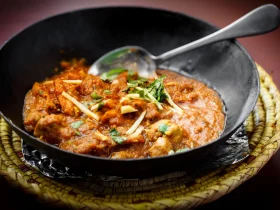

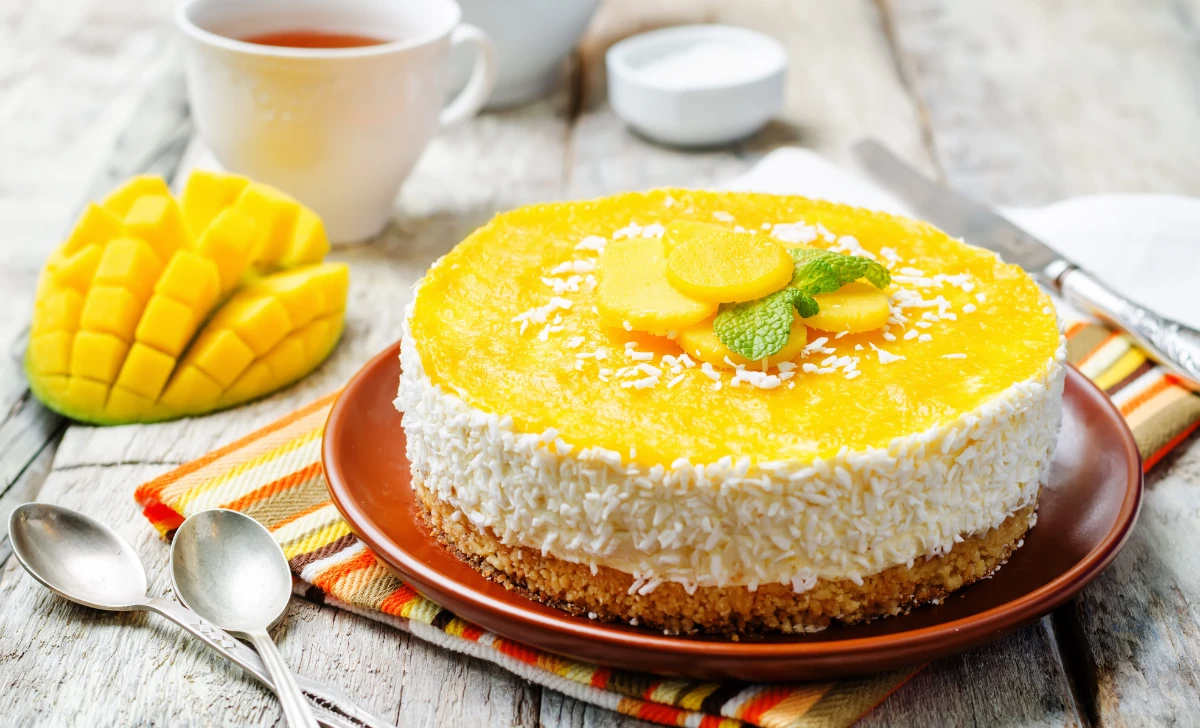

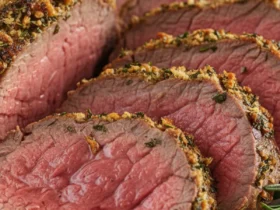
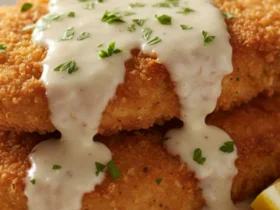
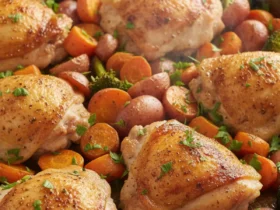
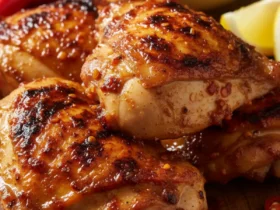
Leave a Review